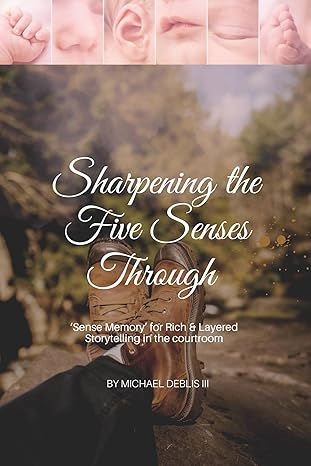Closing Argument: It Ain't Over 'til It's Over
- Michael J. DeBlis III, Esq.

- Aug 12
- 2 min read
Closing argument is a great persuasive device to help you win your case. It is the most powerful part of the trial. It comes last and has the psychological advantage of recency. It is the only part of the trial which can be used without restrictions for setting forth relationships of facts and ideas, for emphasizing certain points, and for putting the case together in argument.
The closing argument is your final opportunity to speak directly to the jury—and if used effectively, it can make all the difference between a verdict in your favor or one against you. It is your moment to clarify, unify, and persuade.
This ebook is designed to help trial attorneys sharpen the most strategic and emotionally charged part of trial: the close. It’s more than just summarizing facts—it’s your chance to frame the evidence, expose flaws in the opposing argument, and lead the jury to a just conclusion.
You’ll learn how to weave a narrative that builds to a powerful crescendo, selecting arguments that speak to both the heart and the mind. Through real-life examples and communication theory, we’ll explore techniques to amplify your persuasive impact through structure, language, body language, and voice control.
We’ll also cover how to deliver closing arguments extemporaneously with confidence and authenticity—because no matter how solid your case is, jurors need to feel it, not just hear it.
Learning Objectives:
· How to construct the ideal structure for a memorable closing
· Identifying and emphasizing themes and theories of the case
· Using rhetorical devices like repetition, metaphor, and rhetorical questions
· Crafting language that moves jurors toward action
· Strategies to deal with damaging facts without weakening your case
· How to develop and deepen a point without losing momentum
· Organizing closing for maximum emotional and logical impact
· Balancing confidence and humility through authentic delivery
· How to use yourself—your voice, gestures, eye contact, posture—as a persuasive instrument
· Mastering nonverbal communication to reinforce key messages
· Impact and emphasis tools: pacing, silence, and vocal variation to highlight crucial points
· Persuasive techniques to appeal to common sense, fairness, and justice
Jurors may forget the evidence, but they rarely forget how an attorney made them feel. The closing argument is your chance to connect all the dots for them—to remind them of the humanity behind the case and to lead them toward the verdict your client deserves.
Whether you're defending a criminal case or seeking justice for an injured client, mastering the art of the closing argument gives you a powerful psychological and rhetorical edge. This ebook gives you the tools to ensure your last word is the one that sticks.
Areas covered:
· Trial advocacy and courtroom persuasion
· Storytelling in litigation
· Criminal defense techniques
· Nonverbal communication in high-stakes settings
· Personal injury trial tactics
· Legal rhetoric and emotional resonance





Comments